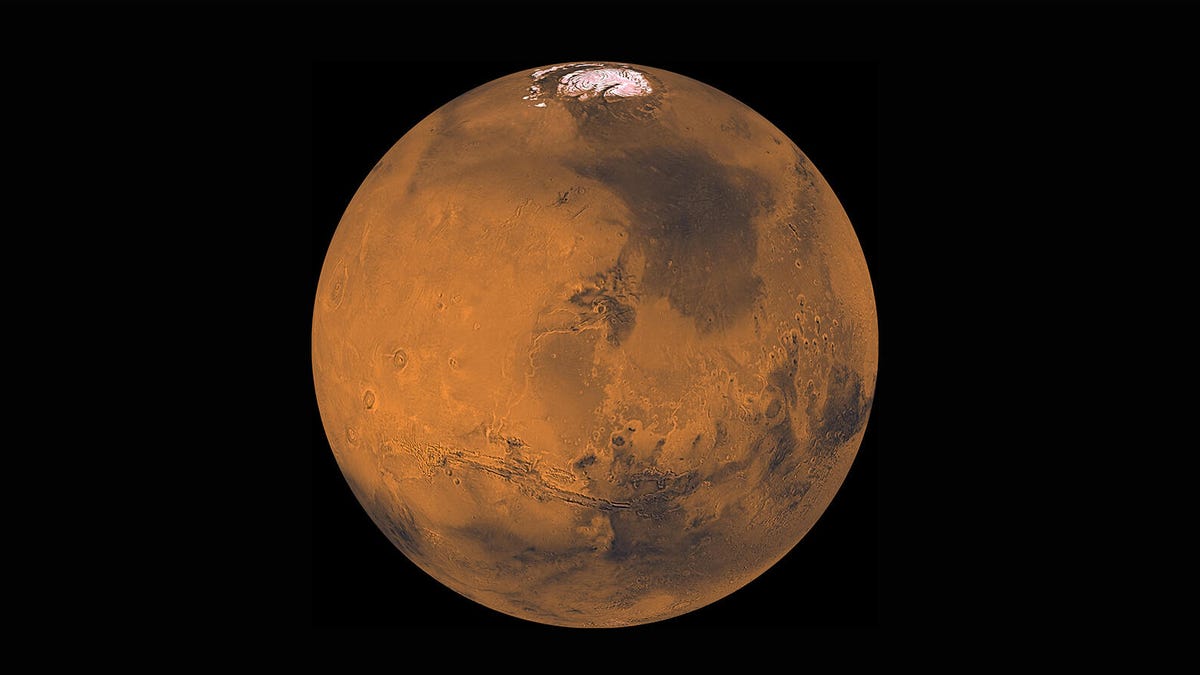Mars might be full of puddles but they're too cold to support life
New research suggests salty brine puddles are more abundant on the surface of Mars than expected -- but life is unlikely to survive within.

Mars: Beautiful and cold, like my last partner.
Scientists are pretty convinced modern-day Mars is lifeless. They've searched high and low for signs, sent a handful of rovers and satellites and found no hard evidence of Martians. However, if there is life on Mars, some scientists hypothesize you'll find it in salty puddles which could exist on the red planet's surface.
Mars is severely lacking in flowing water -- one of the critical elements for life to thrive -- and the current scientific consensus is the red planet doesn't contain multitudes because it is so dry. Liquid water can't persist because Mars has no atmosphere to protect against evaporation. Water has, so far, only been found in the form of ice.
However, the conditions on the Martian surface may allow for pools of very salty liquid to form in some regions -- even if for only short periods of time.
Because certain types of microbes can exist in salty water on Earth and previous research has shown organisms like the salt-loving Halomonas could dry out and be revived under Mars-like conditions, researchers have investigated whether life could, uh, find a way on the Martian surface, too.
New research, published in the journal Nature Astronomy on Monday, assessed the likelihood of brines -- water with a high salt content -- existing on the Martian surface and whether they might be able to support microbial life.
Previous experimental work has shown a type of salt found on the surface of Mars, known as calcium perchlorate, could exist as liquids on the surface. Perchlorate is able to "deliquesce" -- become a liquid by drawing moisture from the air -- and could remain stable on Mars' surface. Research in Nature Geoscience last year suggested brines could contain enough oxygen content for life.
Using a computer modelling program of Martian atmospheric conditions, the team examined the possibility perchlorate could form across Mars' mid latitude regions, how long it might stick around and at what temperatures.
If you're a Martian organism, first of all, hello! Things aren't going great down here right now.
Second, the research team have some good and bad news for you.
Here's the good: the team's modelling shows up to 40% of the Martian surface could host salty puddles. Their existence isn't proven, but if they can form across such a large region, it suggests brines are more common than previously believed.
The bad news? The brines may only remain on the surface of the planet for up to six hours. Based on the modelling, the research demonstrates there's only about a two-week period (in Earth time) where they can persist on the surface. They are also extremely cold, at around -50 degrees Fahrenheit, which is considered far too cold for the life we know of to survive.
Another key finding in this research is how these brines "do not meet the Special Region requirements" of Mars. A Special Region is any area, as classified by the Committee on Space Research (Cospar), that may be able to host Martian life. Establishing these regions is important in the future of space exploration.
"Understanding how microbes can grow on Mars relates directly to the risks of contaminating Mars or other celestial bodies with organisms that can potentially grow on these worlds," said Mark Schneegurt, a biologist at Wichita State University who was not involved in this research, when discussing experimental findings at the annual meeting of the American Society for Microbiology in 2019.
If they can't contain life, the regions identified by the team may be useful places to land because there is no risk of forward contamination from humans bringing microbes over from Earth.
NASA is gearing up to send another Martian rover to the surface of the red plant in July. Perseverance is expected to land in Jezero Crater in January 2021 and will search for signs of past life on the surface. Curiosity rover detected organic molecules, which are sometimes produced by biological means, back in 2018 -- so there's potential there. The rover also contains a tech demonstration helicopter, known as Ingenuity, strapped to its stomach. When it reaches Mars, it will offload the helicopter and, providing it gets off the ground, Ingenuity will become the first vehicle to take flight on another planet.

